MASLD Pharmacotherapy With Chantil Jeffreys
Chat with MASLD AI

Hi, I am MASLD AI.
Suggested Questions :

MASLD AI 03:47 AM

In this MASLD Community Network webcast, Chantil Jeffreys, NP, walks through a practical framework for pharmacotherapy in MASLD/MASH—from lifestyle-first approaches to the evolving role of GLP-1 receptor agonists and bariatric/endoscopic options. She clarifies common misconceptions (e.g., statins are safe—and beneficial—for patients with fatty liver), reviews evidence and real-world considerations for vitamin E and pioglitazone, and explains where resmetirom (Rezdiffra) fits today for non-cirrhotic MASH with F2–F3 fibrosis—including monitoring, drug–drug interactions, and documentation tips that support payer approval. The session also covers cardiovascular risk reduction, peri-procedure guidance for GLP-1s, and practical strategies for staging and follow-up so clinicians can confidently personalize therapy and improve outcomes.
Related Podcast
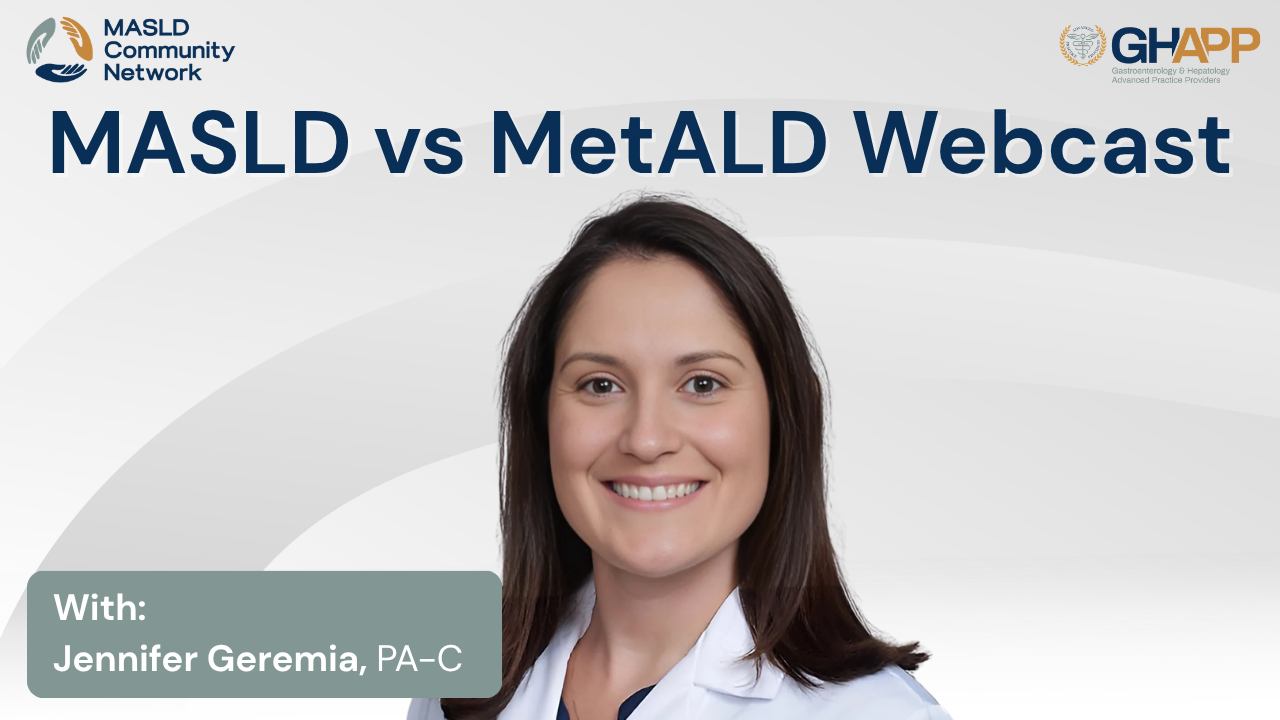
MASLD vs MetALD With Jennifer Geremia

In this GHAPP MASLD Community Network presentation, Jennifer Geremia, PA-C explains how to differentiate metabolic dysfunction–associated steatotic liver disease (MASLD) from metabolic dysfunction plus alcohol-associated liver disease (MetALD) and how to manage patients who sit on the MASLD–MetALD spectrum. Using a classic case (52-year-old with BMI 29.4, PCOS, hypertension, hyperlipidemia, ultrasound-confirmed steatosis, FibroScan 11.4 kPa [F3] and CAP 310), she shows how to combine history, “standard drink” counseling, AUDIT-C screening, and objective biomarkers like PEth to uncover under-reported alcohol use, quantify grams/day or week, and classify risk. You’ll learn practical algorithms for ruling out alternative etiologies, assessing cardiometabolic drivers, interpreting noninvasive tests, and estimating 5-year decompensation risk across MASLD, MetALD, and ALD. The session closes with actionable care steps: lifestyle and Mediterranean-style nutrition, exercise and weight-loss targets, strict alcohol cessation (and referral when appropriate), consideration of pharmacologic options in advanced fibrosis, and when to initiate HCC surveillance. Scan the QR code to confirm attendance and access more MASLD/MetALD education and resources.
Watch Now
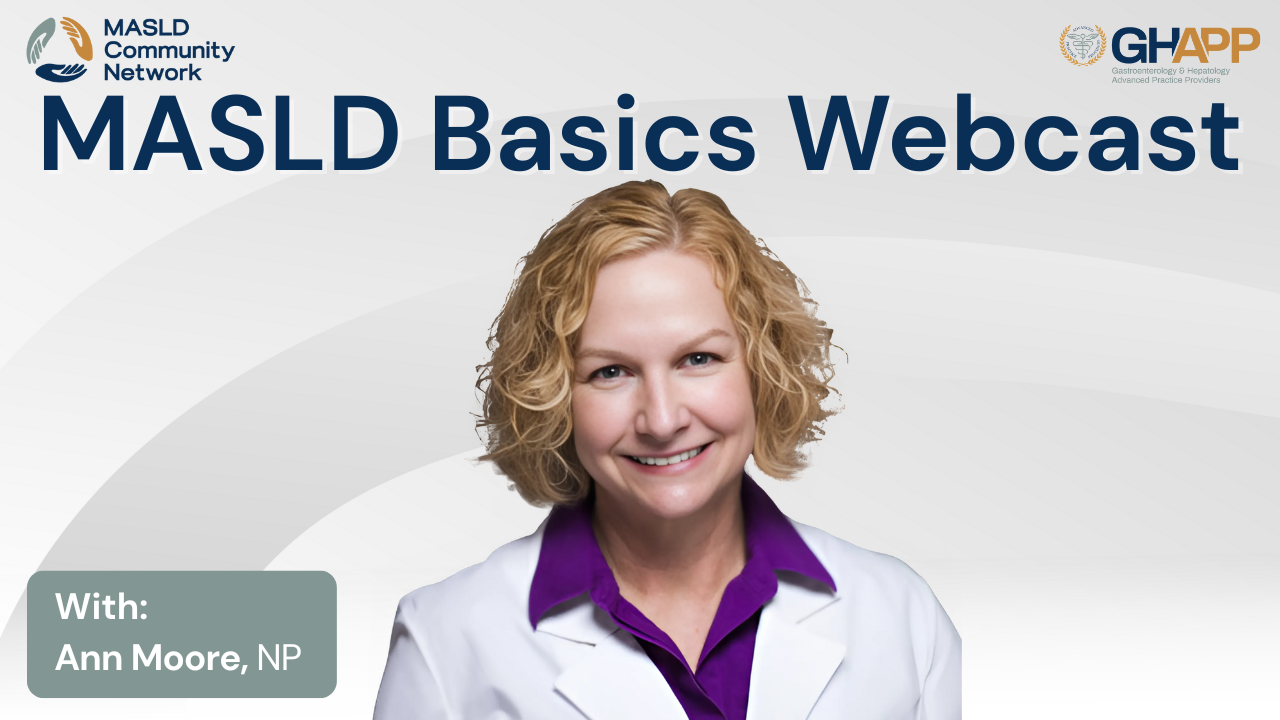
MASLD Basics With Ann Moore

In this episode of MASLD Basics, Ann Moore, NP with Arizona Liver Health, explains the new terminology and approach to what was once called fatty liver disease. She breaks down how “NAFLD” is being replaced with steatotic liver disease and how patients are now categorized based on underlying drivers such as metabolic dysfunction, alcohol use, or other conditions. Ann highlights why MASLD and MASH are the most common and important to recognize, what risk factors providers should look for, and why early detection matters. She also discusses how primary care teams can use simple non-invasive tests, lifestyle changes, and new treatment options to identify at-risk patients before fibrosis and cirrhosis develop. This talk is designed to give APPs, clinicians, and healthcare providers a clear, practical overview of the evolving landscape of liver disease care.
Watch Now
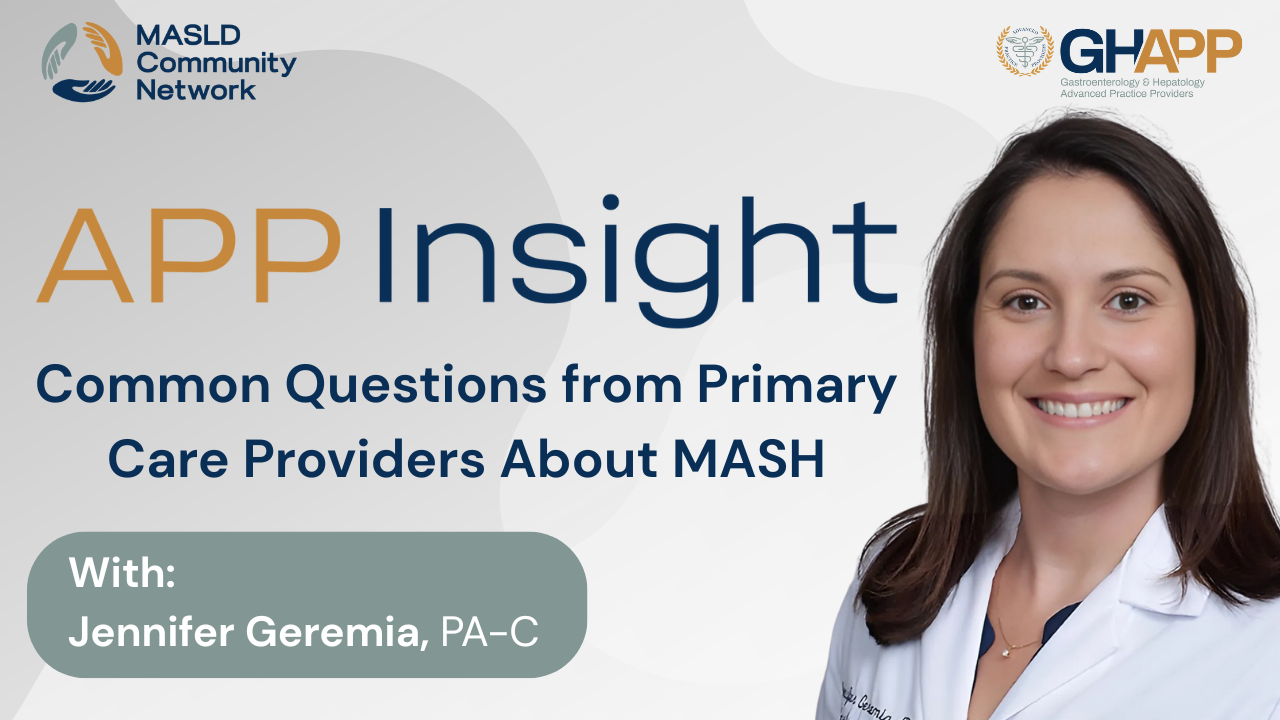
Common Questions From Primary Care Providers About MASH

In this informative session, Jennifer Geremia, PA-C, a seasoned gastroenterology physician assistant in tertiary care Boston, addresses some of the most common questions primary care providers have about identifying and managing patients with fatty liver disease, MASLD (Metabolic dysfunction-associated steatotic liver disease), and MASH (Metabolic-associated steatohepatitis). Jennifer highlights the importance of using FIB-4 as a first-line non-invasive test (NIT) in high-risk patients with diabetes, obesity, or other metabolic conditions—noting how easily this tool can be integrated into routine labs via the EMR. She underscores that the liver is often overlooked in chronic disease management and makes a strong case for routine fibrosis screening alongside cardiovascular and diabetes evaluations. The talk also dives into actionable next steps after FIB-4 testing, including elastography, ELF testing, and referrals to GI when needed. Jennifer closes by discussing realistic lifestyle intervention goals—especially the importance of 7–10% weight loss for meaningful reductions in steatosis and fibrosis risk. This session is a must-watch for PCPs, APPs, and clinicians managing metabolic comorbidities and seeking practical, evidence-based strategies for early MASH detection and management.
Watch Now
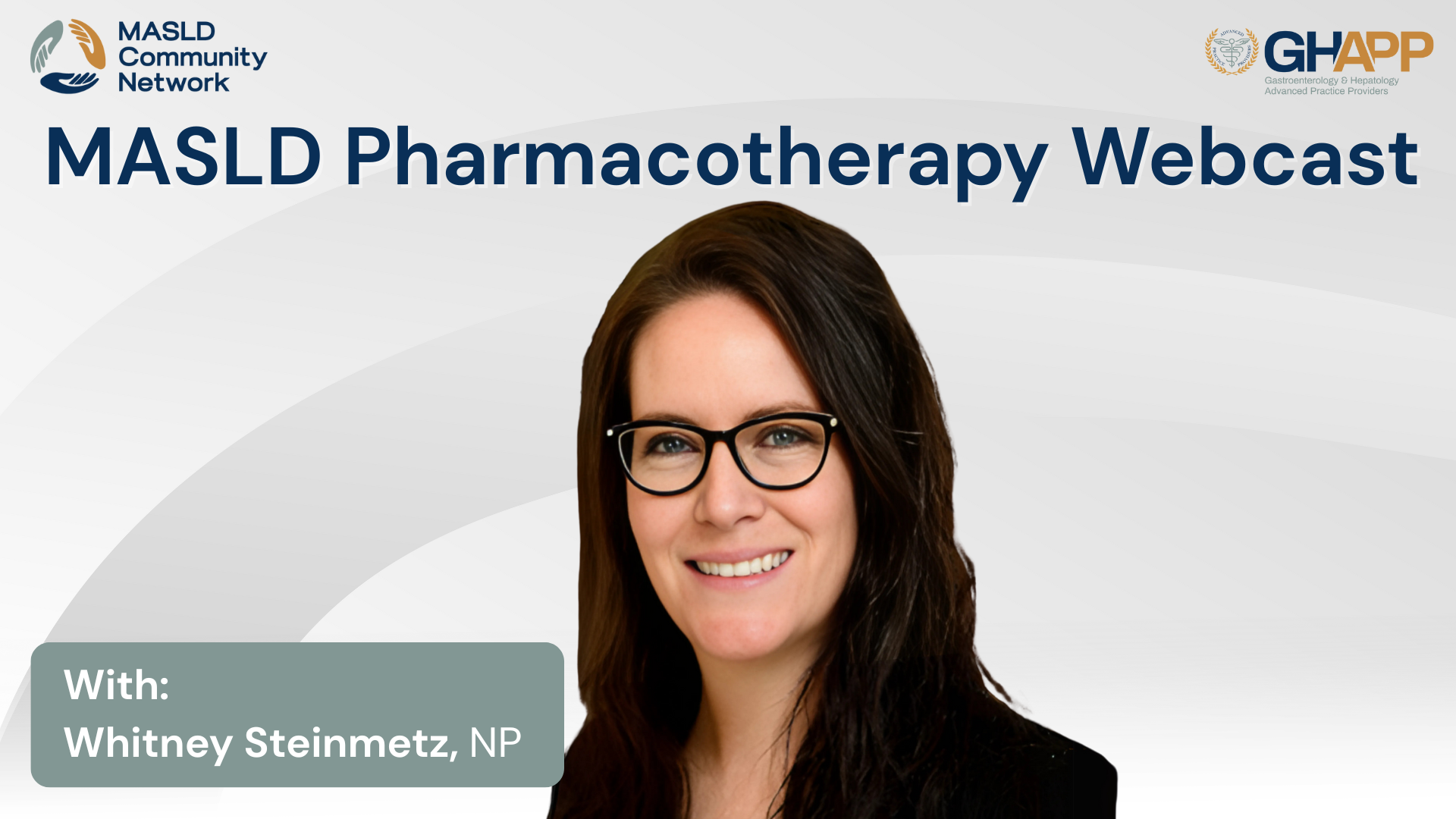
MASLD Pharmacotherapy With Whitney Steinmetz

Join Whitney Steinmetz, NP, from Presbyterian Medical Group in Albuquerque, NM, for an in-depth review of pharmacotherapy in MASLD and MASH, presented as part of the GHAPP MASLD Community Network. In this comprehensive CME-eligible session, Whitney explores the multimodal treatment approach for patients with Metabolic Dysfunction-Associated Steatotic Liver Disease (MASLD) and Metabolic Dysfunction-Associated Steatohepatitis (MASH), focusing on three therapeutic pillars: obesity management, cardiometabolic risk reduction, and liver-directed therapies. The discussion covers mechanisms, clinical trial data, and practical considerations for key treatment options, including GLP-1 receptor agonists, vitamin E, pioglitazone, and resmetirom (Rezdiffra). Whitney highlights findings from landmark studies such as ESSENCE, PIVENS, and MAESTRO-NASH, and explains how thyroid hormone receptor beta activation through resmetirom reduces hepatic fat, inflammation, and fibrosis in F2-F3 patients. She also offers guidance on non-invasive monitoring (FibroScan, MRE, ALT), drug–drug interactions, and how evolving guidelines from AASLD and ESLD shape clinical decision-making. Whether you're treating early-stage fatty liver disease or managing moderate fibrosis in primary care or hepatology, this video provides evidence-based insights to optimize long-term outcomes through targeted pharmacologic strategies and patient-centered care.
Watch Now

NITs: A Practical Overview: Navigating the Basics

In this episode, Christie Morrison breaks down the fundamentals of non-invasive testing (NITs) for evaluating patients with fatty liver disease, including MASLD and MASH. She explains the key differences between steatosis (MASLD) and steatohepatitis (MASH), highlighting how non-invasive tests can replace liver biopsy for staging fibrosis. Christy reviews common tools like FIB-4, NAFLD fibrosis score, Enhanced Liver Fibrosis (ELF) score, transient elastography (FibroScan), and MR elastography, and outlines how to choose the right test based on patient factors such as co-morbidities, geography, access to labs, and imaging availability. The episode also emphasizes the importance of fibrosis risk stratification, interpreting FIB-4 cutoffs, and monitoring liver stiffness or ELF scores after initiating lifestyle or pharmacologic treatment—including newer therapies like resmetirom. This is a must-watch for APPs, GI clinicians, and primary care providers seeking to improve care pathways and outcomes in patients with metabolic liver disease through practical, accessible strategies for fibrosis detection and management.
Watch Now
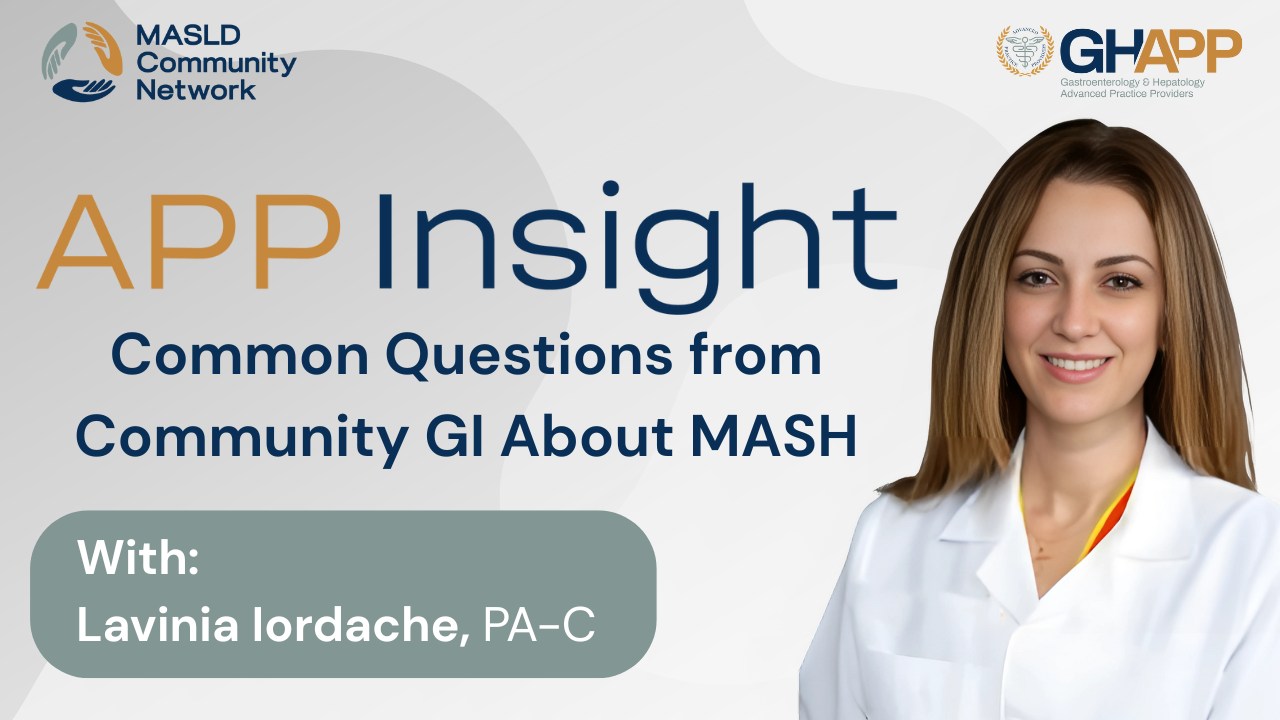
Common Questions From Community GI About MASH

In this session, Lavinia Iordache, PA-C, from the University of Miami, draws on a decade of experience in inpatient and outpatient hepatology to address common management questions related to MASLD (Metabolic dysfunction-associated steatotic liver disease) and MASH (Metabolic-associated steatohepatitis). She provides practical guidance for gastroenterology providers navigating when to monitor versus refer patients with fibrosis, how to interpret and time non-invasive testing (NITs) such as FIB-4, and when liver biopsy may still play a role—particularly in cases with persistently elevated liver enzymes despite lifestyle improvement. Lavinia also dives into the referral criteria for hepatology, the evolving role of resmetirom in stage 2–3 fibrosis, and the critical topic of HCC screening. While current AASLD guidelines limit HCC surveillance to cirrhosis, Lavinia highlights emerging evidence and EASL recommendations supporting imaging in patients with F3 fibrosis based on individualized risk factors like diabetes, genetics, and obesity. She also explains why CT or MRI is often preferred over ultrasound in MASLD patients due to obesity-related imaging limitations. This is a must-watch for hepatology and GI teams managing liver fibrosis in metabolic disease.
Watch Now
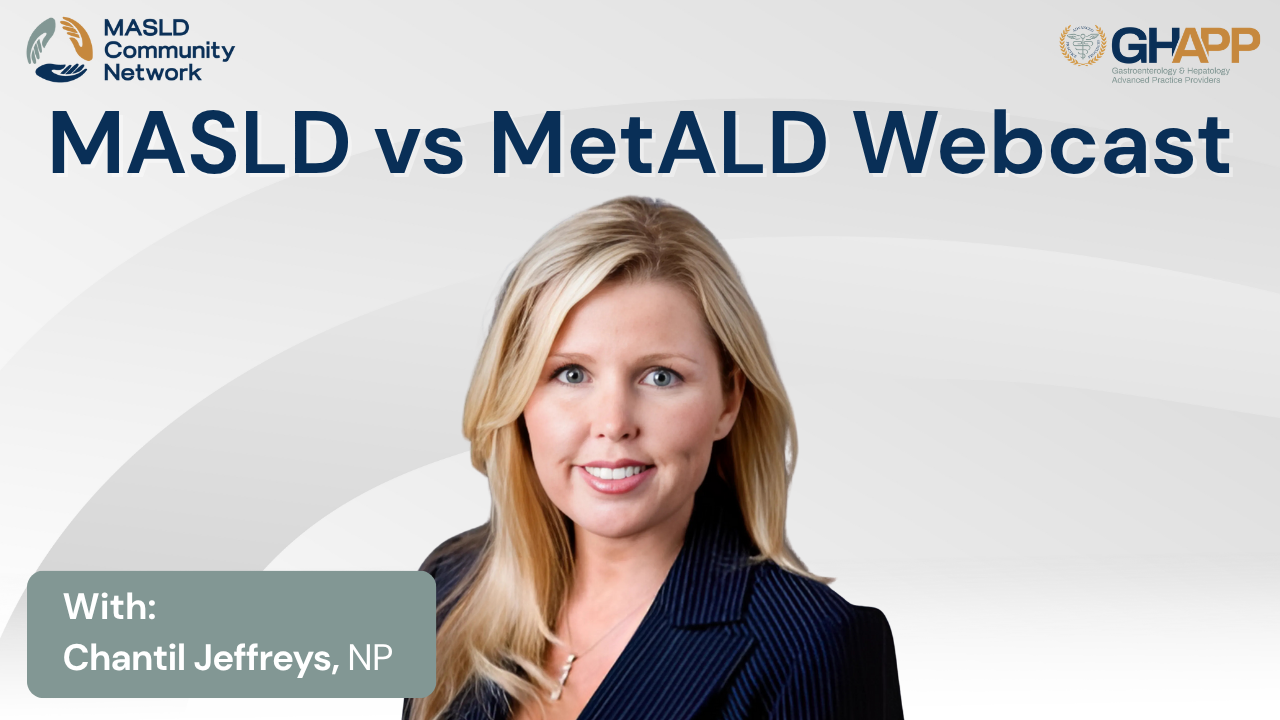
MASLD vs MetALD With Chantil Jeffreys

Chantil Jeffreys, NP at Gastro One, offers a clear, case-based overview of metabolic dysfunction–associated steatotic liver disease (MASLD), MASH, and mixed-etiology MET-ALD. Using a common clinic scenario, she explains how to recognize steatotic liver disease, why accurate alcohol history matters, and how non-invasive tools (e.g., FibroScan for stiffness and CAP, alcohol biomarkers like PEth/EtG) can clarify what’s driving liver injury. You’ll get practical guidance on lifestyle therapy—Mediterranean-style nutrition, sustainable weight loss, and regular aerobic plus resistance exercise—along with when to consider medications, specialist referral, and HCC surveillance. Ideal for APPs and GI clinicians seeking a simple, patient-centered approach to preventing progression from fatty liver to advanced fibrosis and cirrhosis.
Watch Now
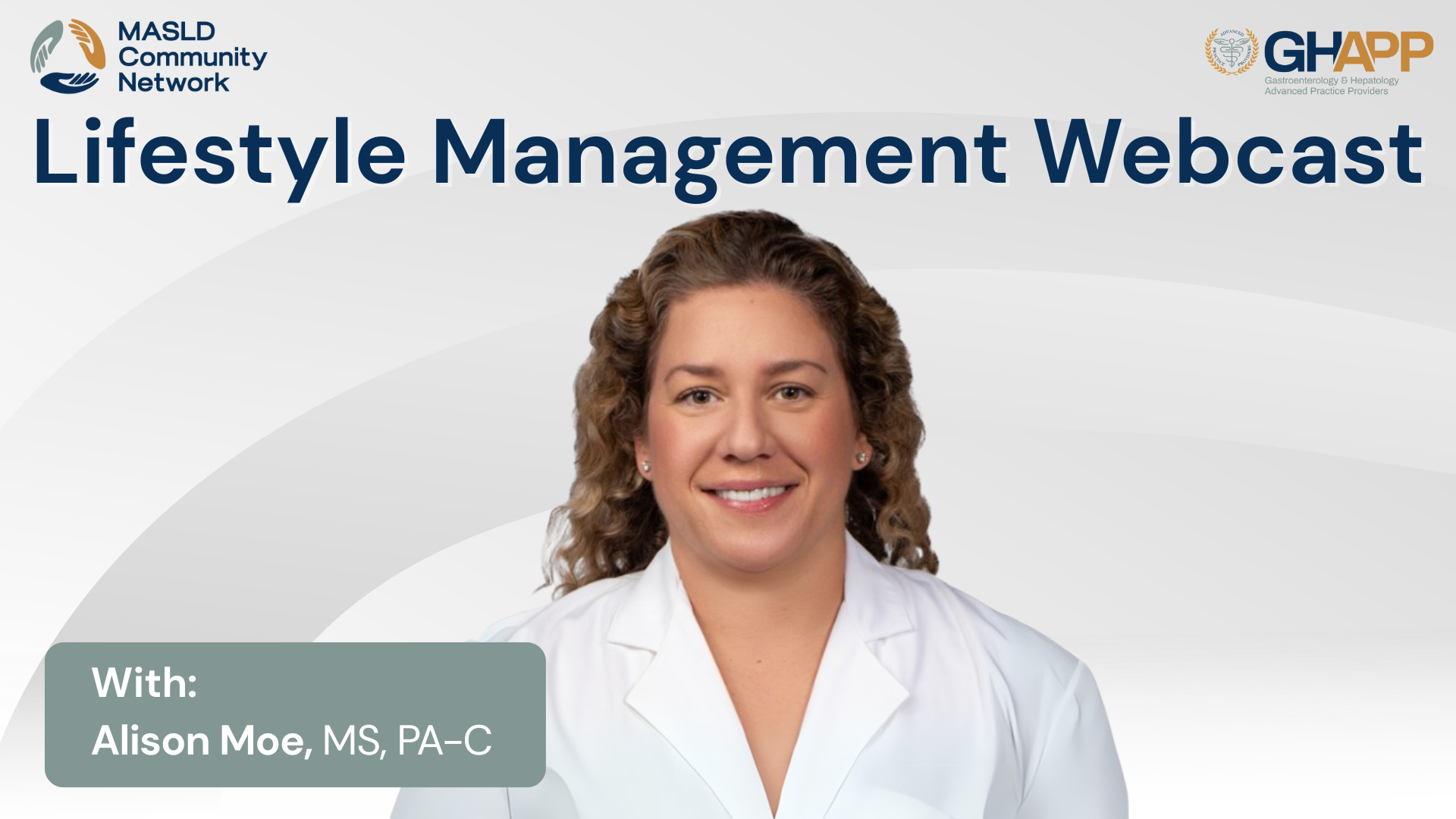
Lifestyle Management With Alison Moe

Join Alison Moe, PA-C, from Atlanta Gastroenterology Associates, as she walks through a real-world clinical case highlighting the challenges and strategies in managing Metabolic Dysfunction-Associated Steatotic Liver Disease (MASLD) and Metabolic Dysfunction-Associated Steatohepatitis (MASH). In this engaging and educational session, Alison shares the case of a 65-year-old Hispanic male with obesity, type 2 diabetes, and fatty liver disease—diving deep into non-invasive diagnostic tools, including FIB-4 scoring and FibroScan, and how these help guide risk stratification for liver fibrosis. The discussion emphasizes the crucial role of dietary counseling, culturally sensitive lifestyle modifications, and exercise guidance to slow or even reverse disease progression. Learn how to set achievable goals for patients and explore effective methods for improving glycemic control, BMI, and overall liver health. Alison also touches on evidence-based interventions such as the Mediterranean diet, resistance training, and intermittent fasting, supported by AASLD and European liver guidelines. Whether you're a clinician treating MASLD or simply interested in the evolving approach to fatty liver disease, this case study offers practical takeaways and guidance to optimize patient outcomes.
Watch Now
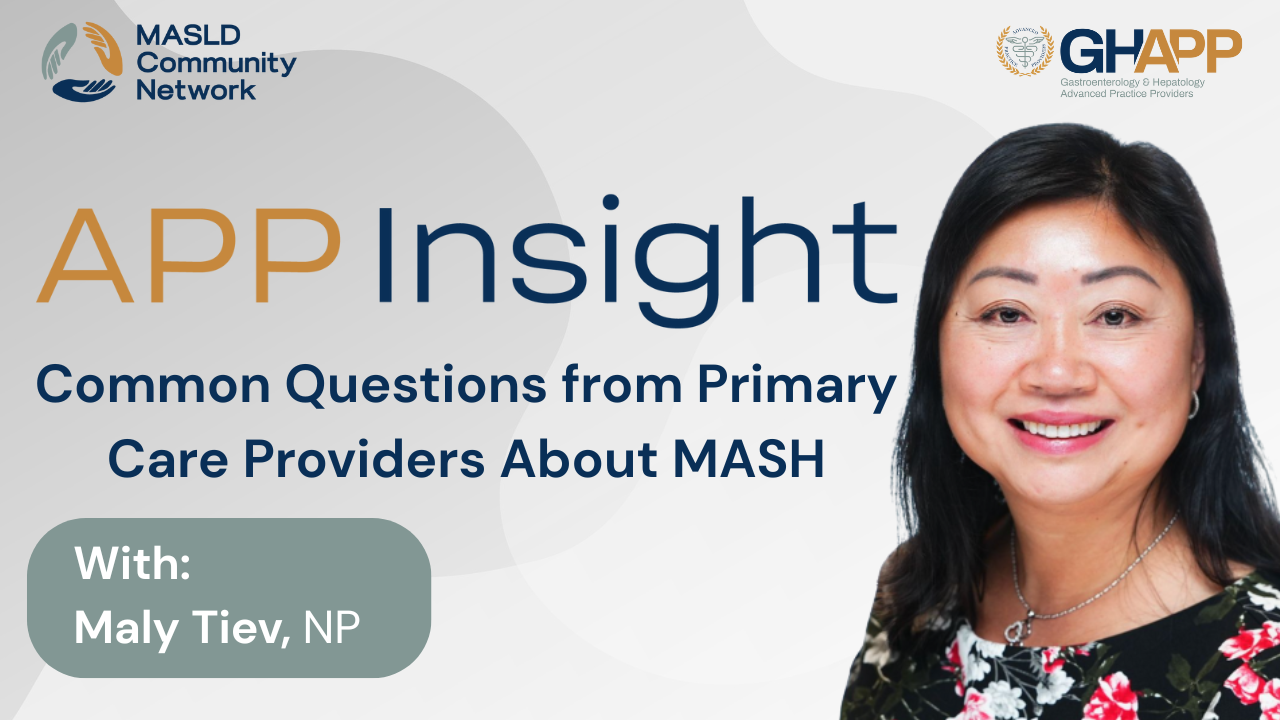
Common Questions From Primary Care Providers About MASH

Join Maly Tiev, NP, NYU Langone Health, as she answers common questions from primary care providers about Metabolic Dysfunction-Associated Steatohepatitis (MASH). Learn who should be screened based on AASLD and American Diabetes Association guidelines, including patients with obesity, pre-diabetes or diabetes, metabolic syndrome, persistent ALT elevation, or steatosis on imaging. Molly explains when to refer MASH patients to gastroenterology or hepatology—such as those with FIB-4 scores over 1.3, suspected advanced fibrosis, or unexplained liver enzyme elevations—and addresses the safety of prescribing statins in MASH. Backed by multiple studies, she emphasizes that statins do not increase liver injury risk and can significantly reduce cardiovascular mortality, the leading cause of death in this population. This session provides practical, evidence-based guidance to help clinicians improve MASH detection, optimize referrals, and manage cardiovascular risk safely.
Watch Now
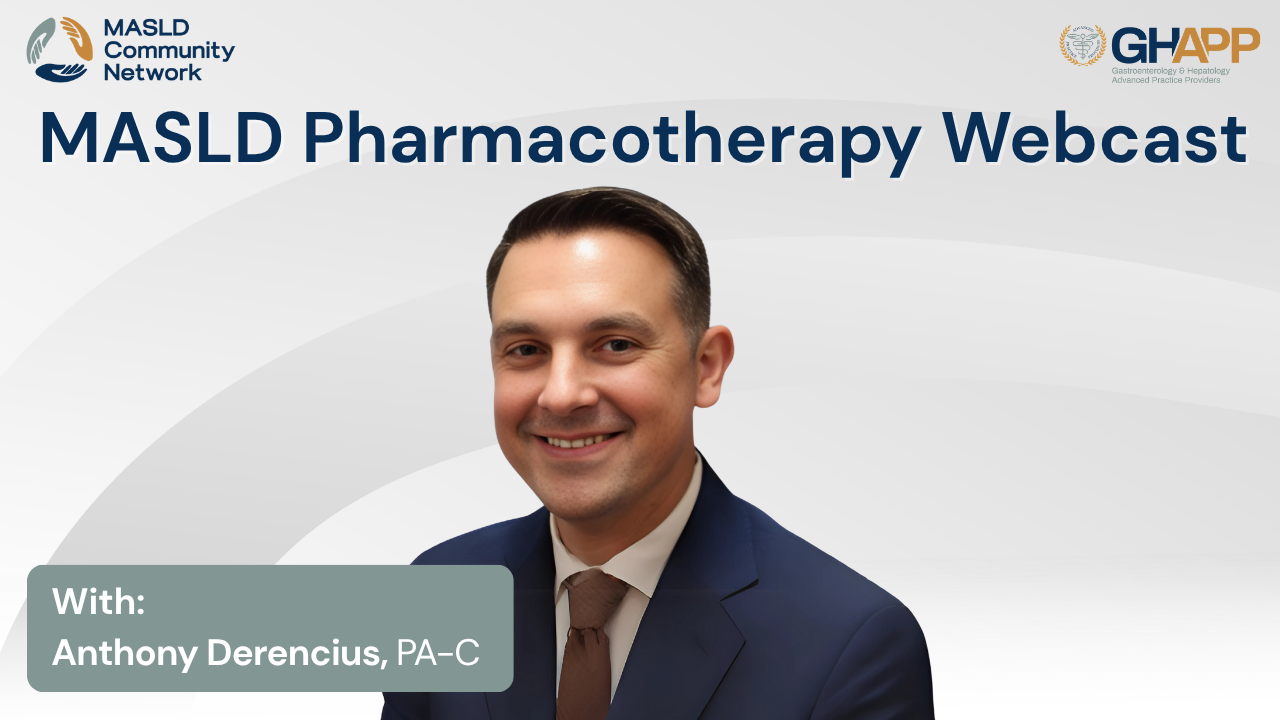
MASLD Pharmacotherapy With Anthony Derencius

Join Anthony Derencius, PA-C, sub-investigator at Pinnacle Clinical Research, for an in-depth, case-based discussion on the pharmacologic management of MASLD (Metabolic Dysfunction-Associated Steatotic Liver Disease) and MASH (Metabolic Steatohepatitis) in this GHAPP MASLD Community Network presentation. With clinical insights from both hepatology practice and research, Anthony explores the multifactorial approach to managing metabolic liver disease—emphasizing weight loss strategies, GLP-1 receptor agonists, cardiovascular risk reduction, and liver-directed therapies. Learn how medications like semaglutide and tirzepatide play a role in weight loss and glycemic control, and how vitamin E and pioglitazone are still considered under specific circumstances. A major highlight includes the mechanism and clinical data behind resmetirom, the first FDA-approved therapy for MASH with F2–F3 fibrosis. Anthony explains its thyroid hormone receptor β-selectivity, efficacy data from the MAESTRO-NASH trial, real-world safety considerations, drug interactions, and monitoring protocols. This presentation is essential viewing for clinicians managing MASLD and MASH in both community and research settings, offering practical strategies, current guidelines, and a look into the future of liver-specific pharmacotherapy.
Watch Now





 September 2025
September 2025 